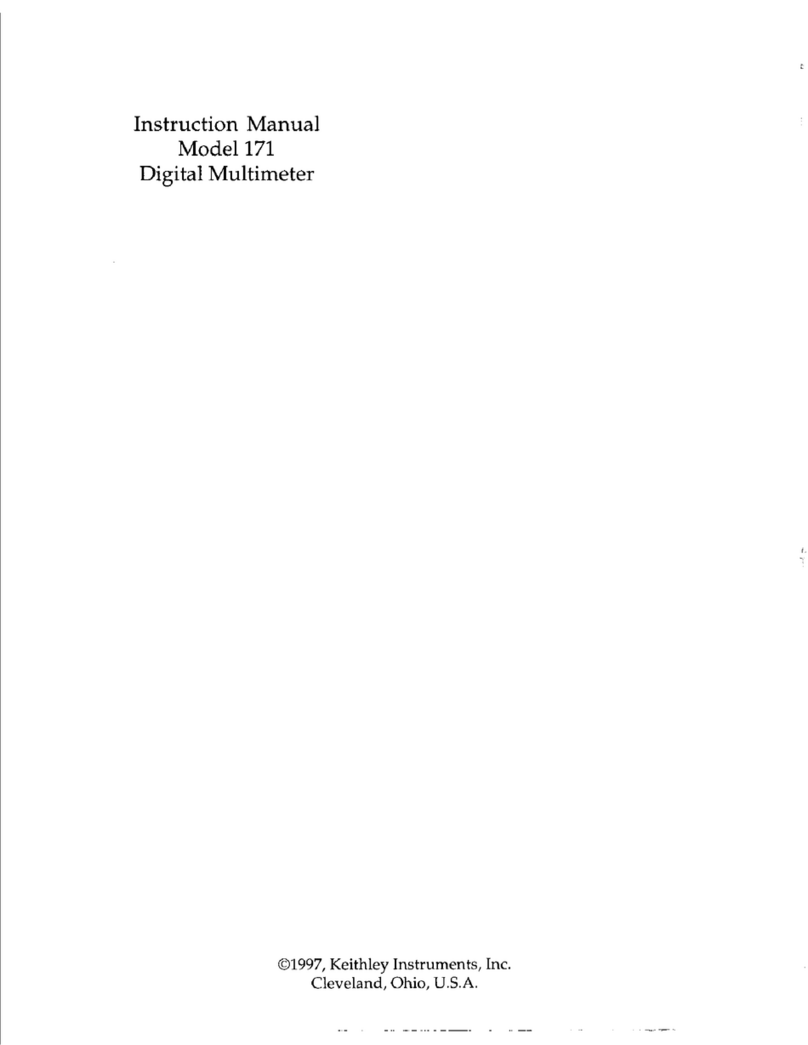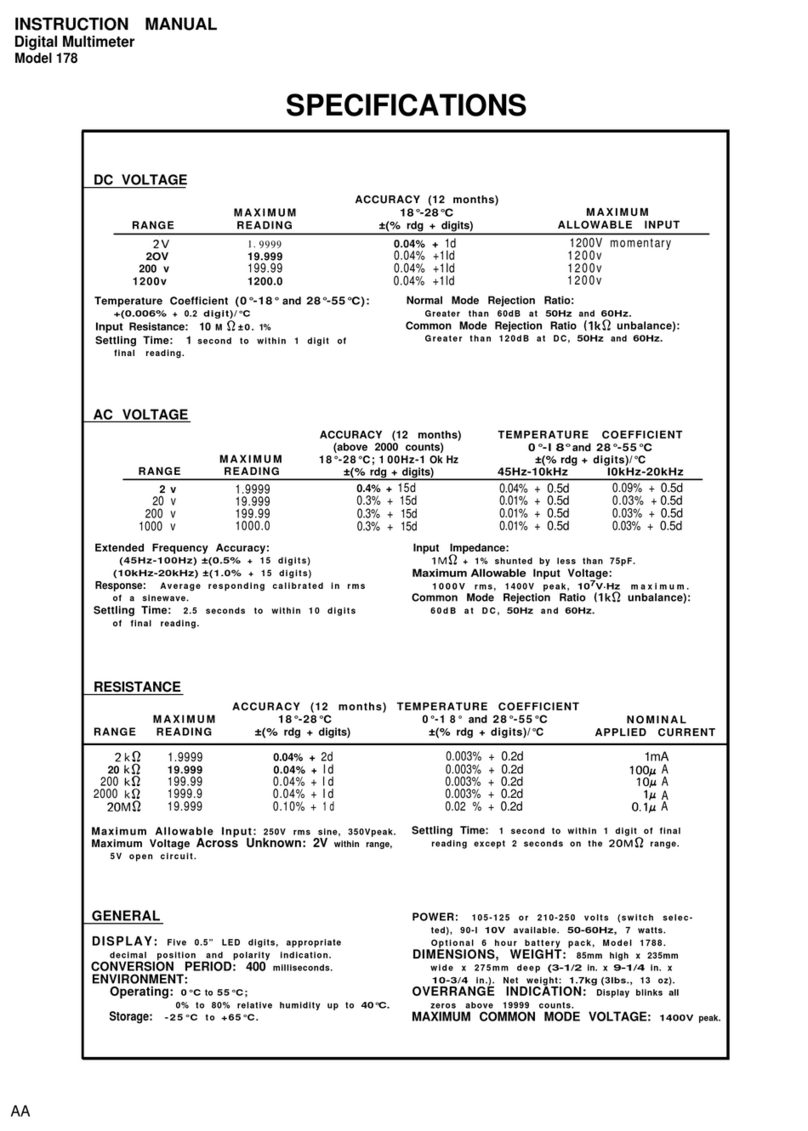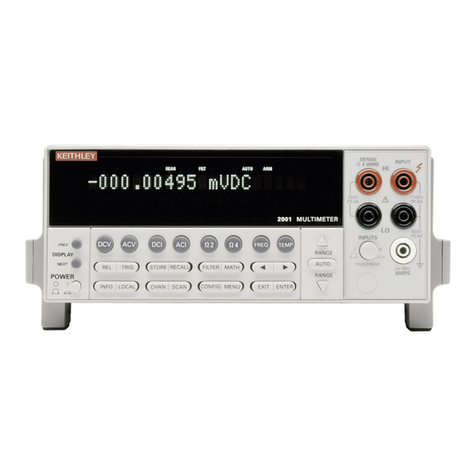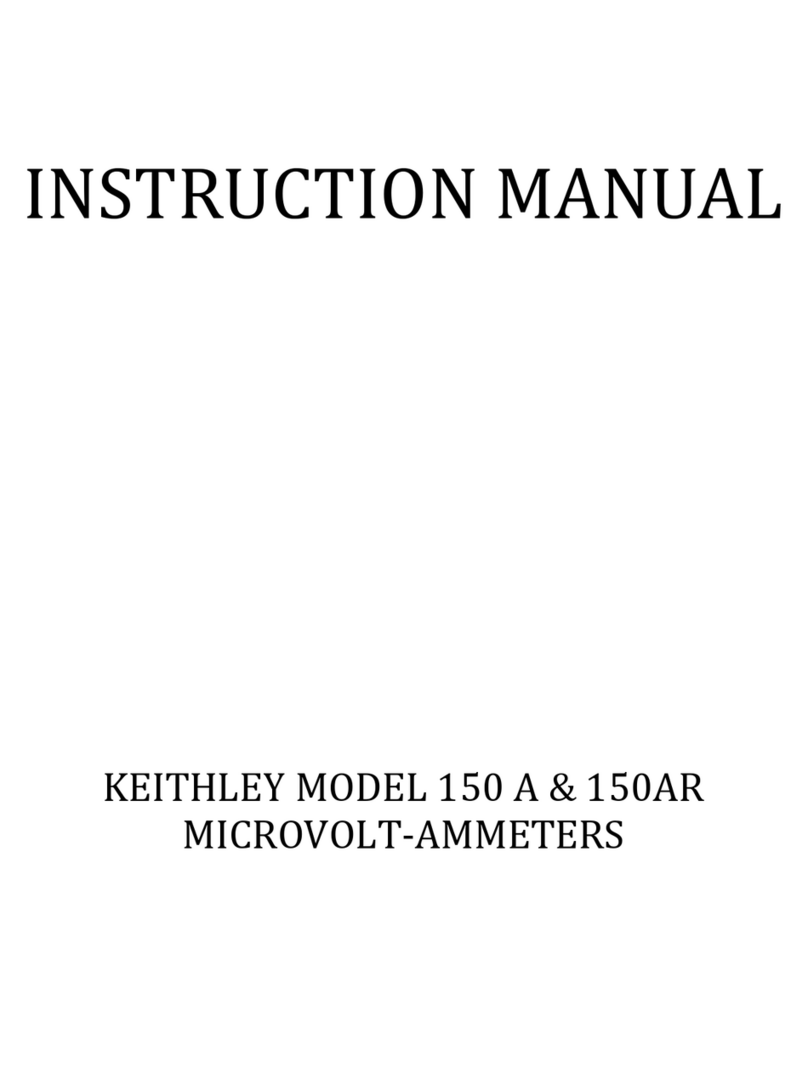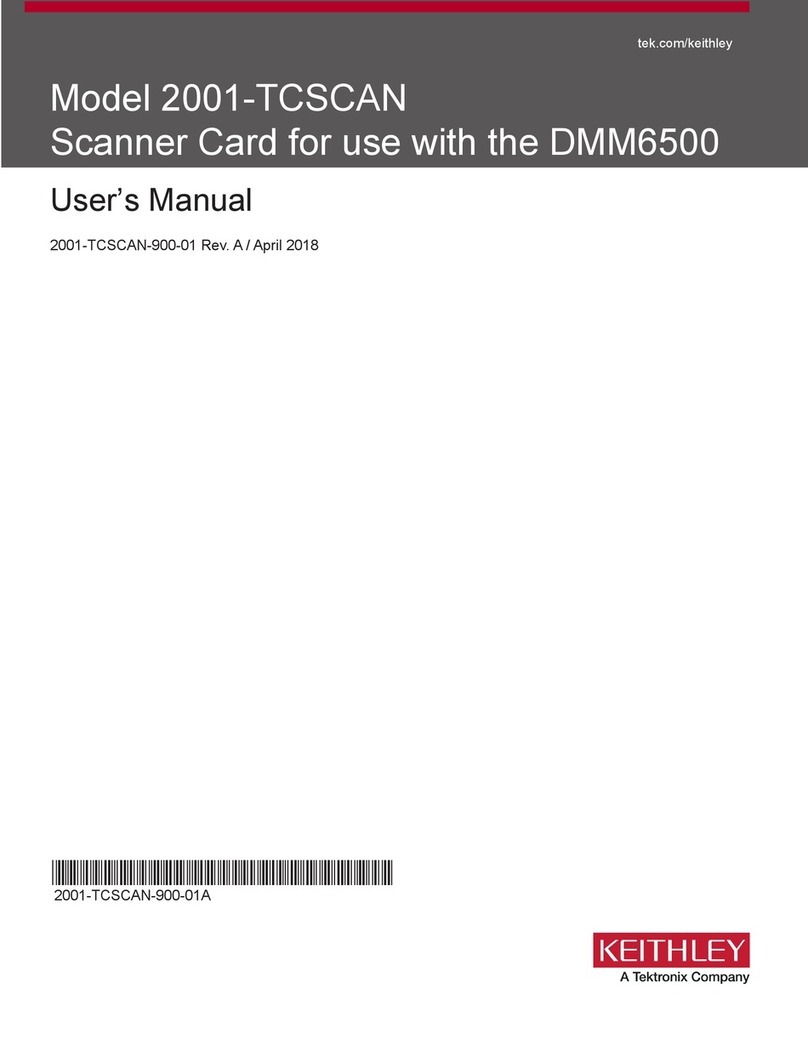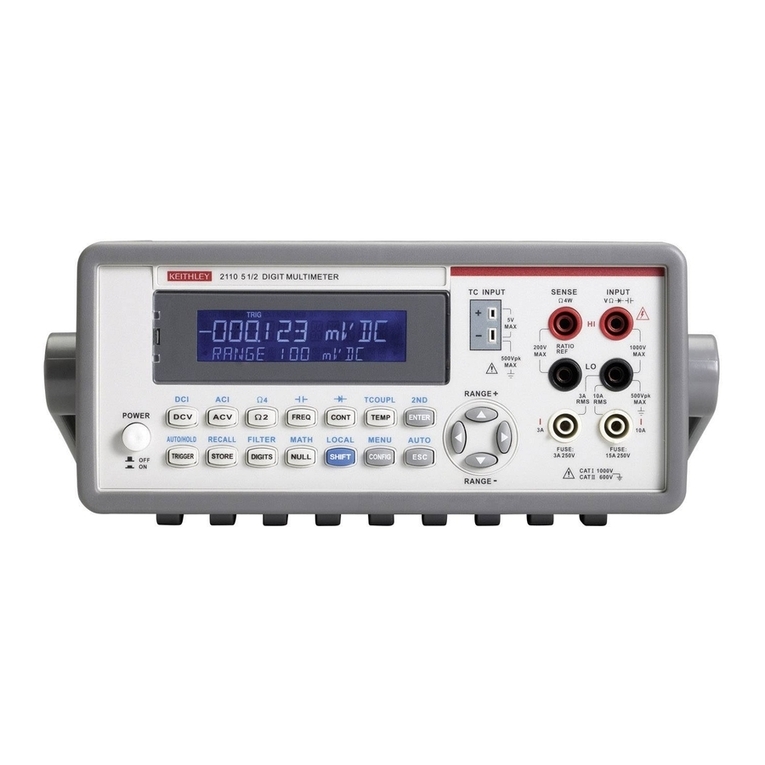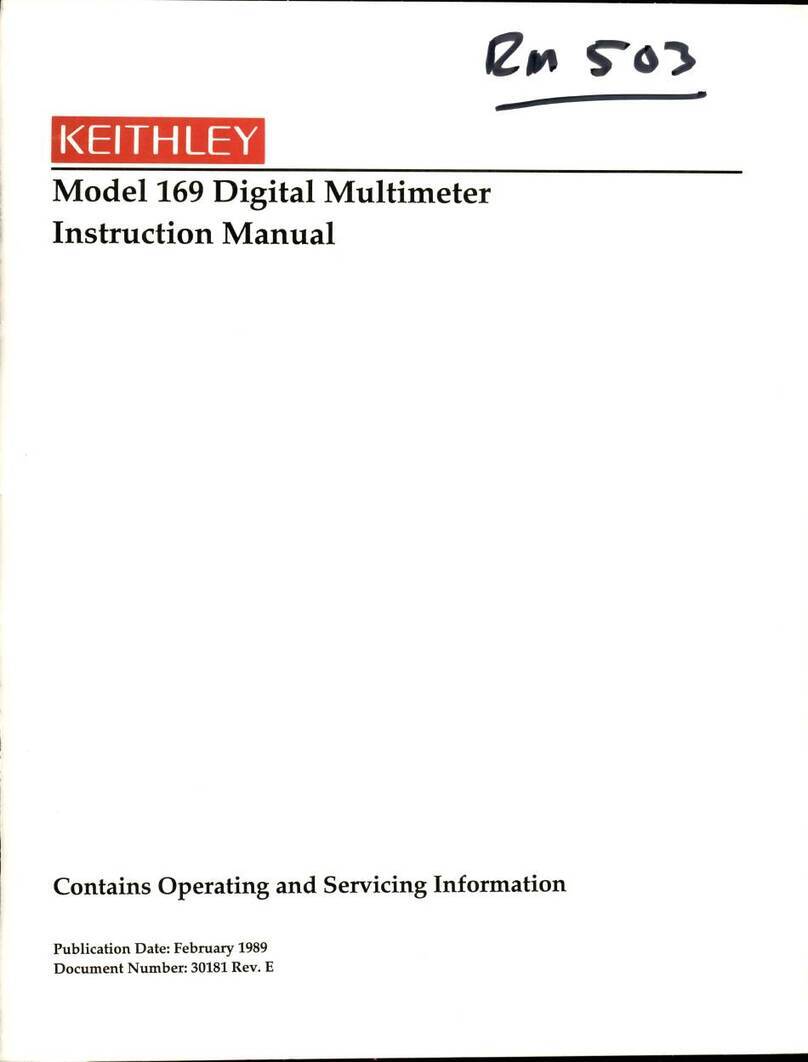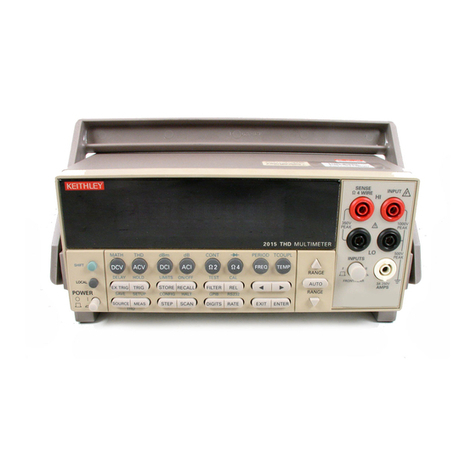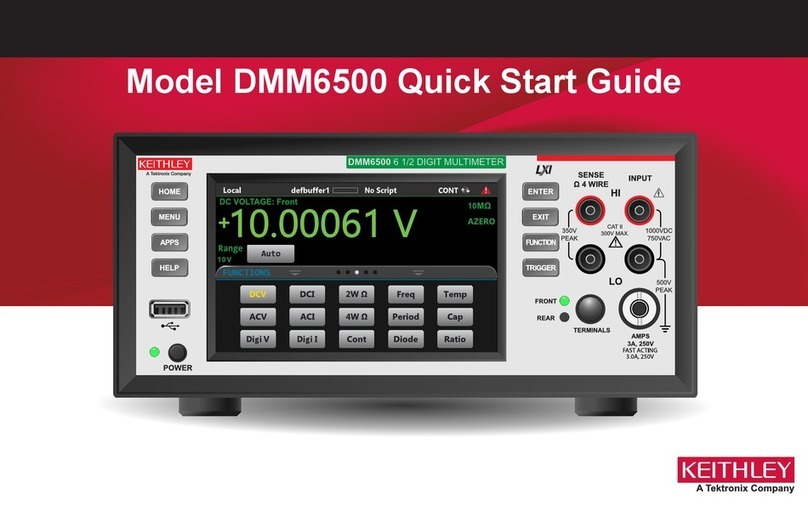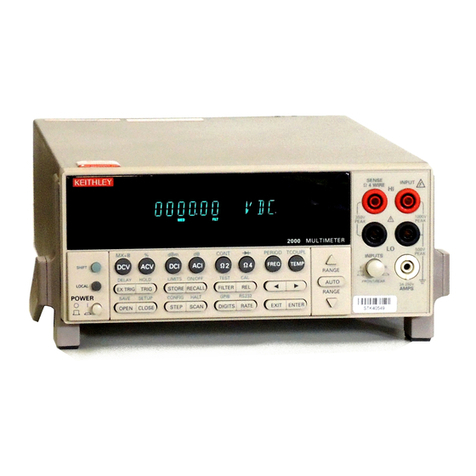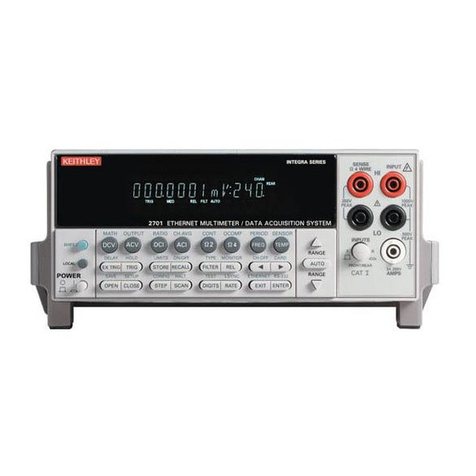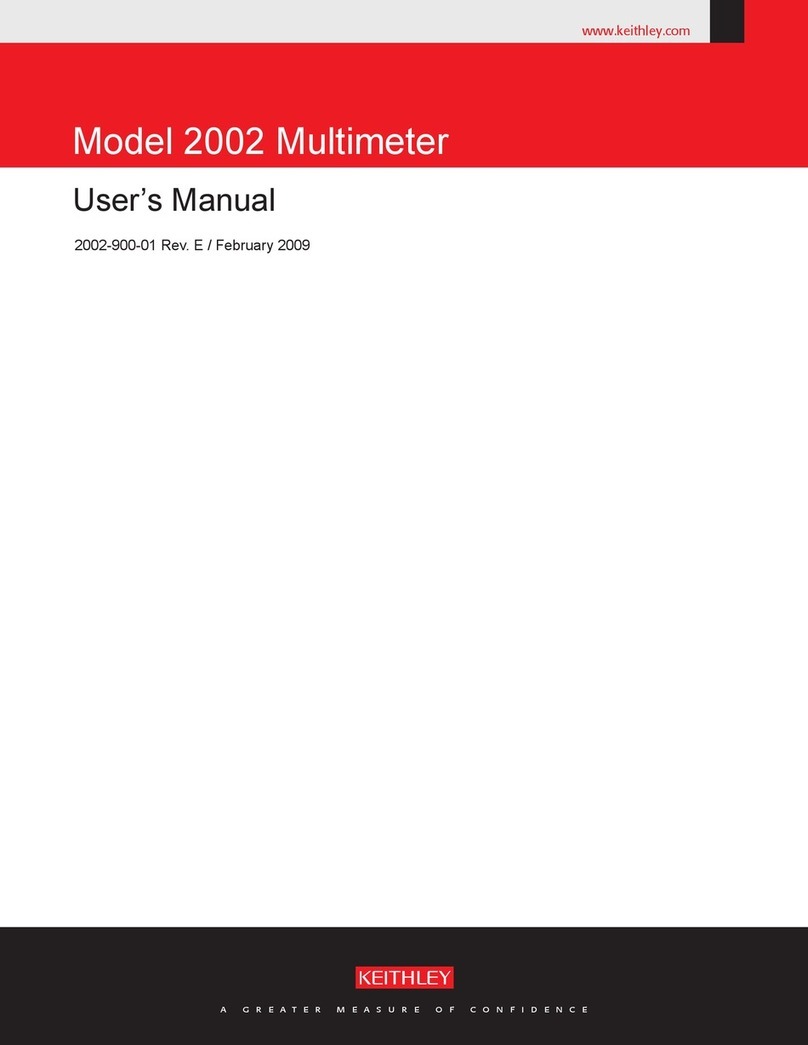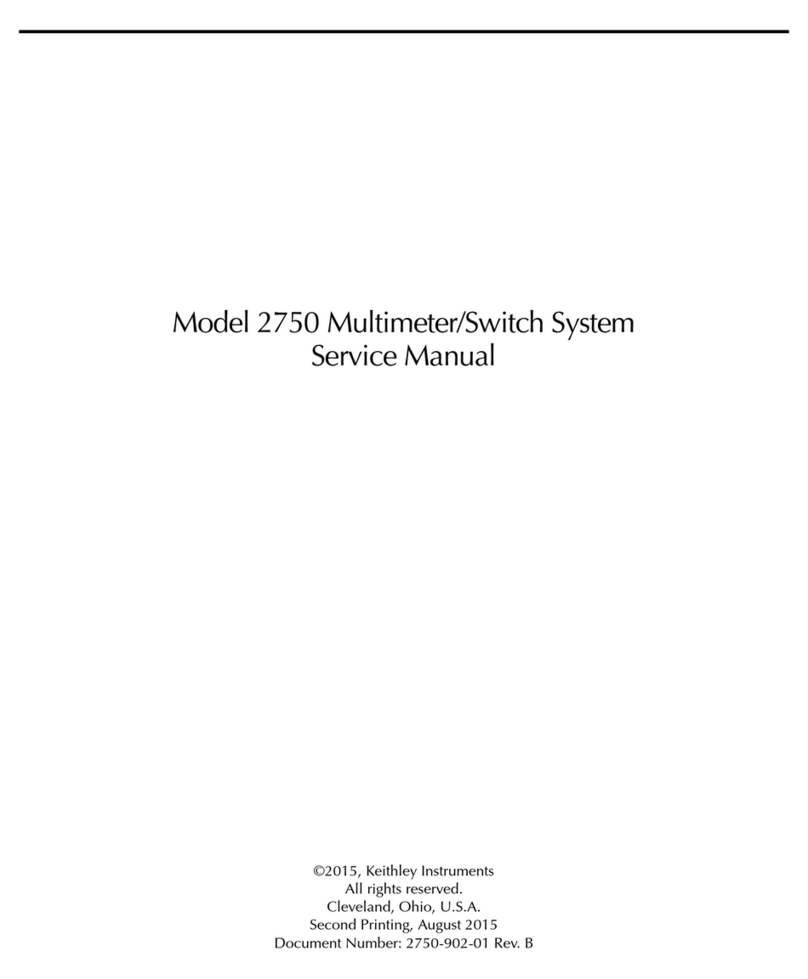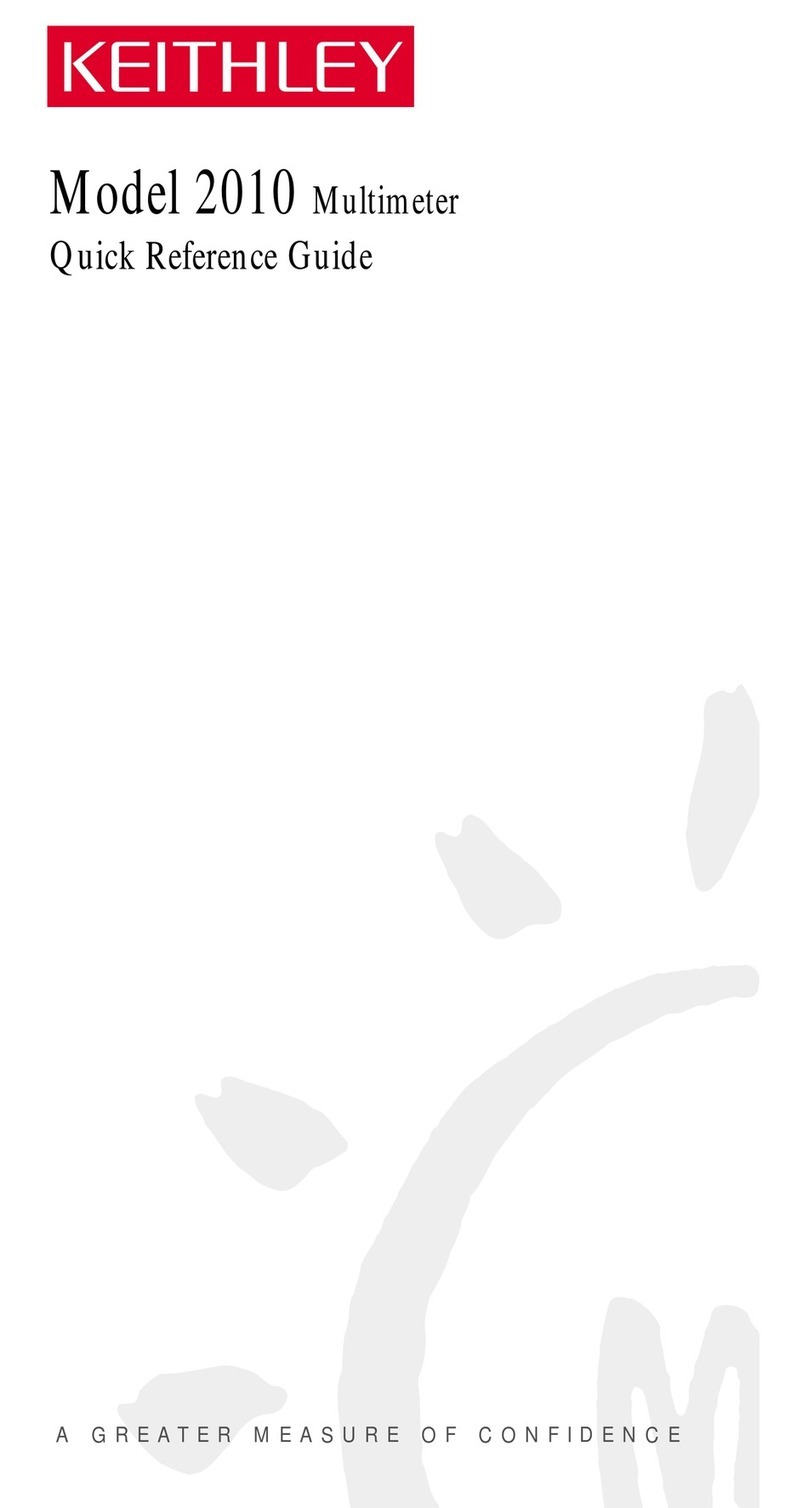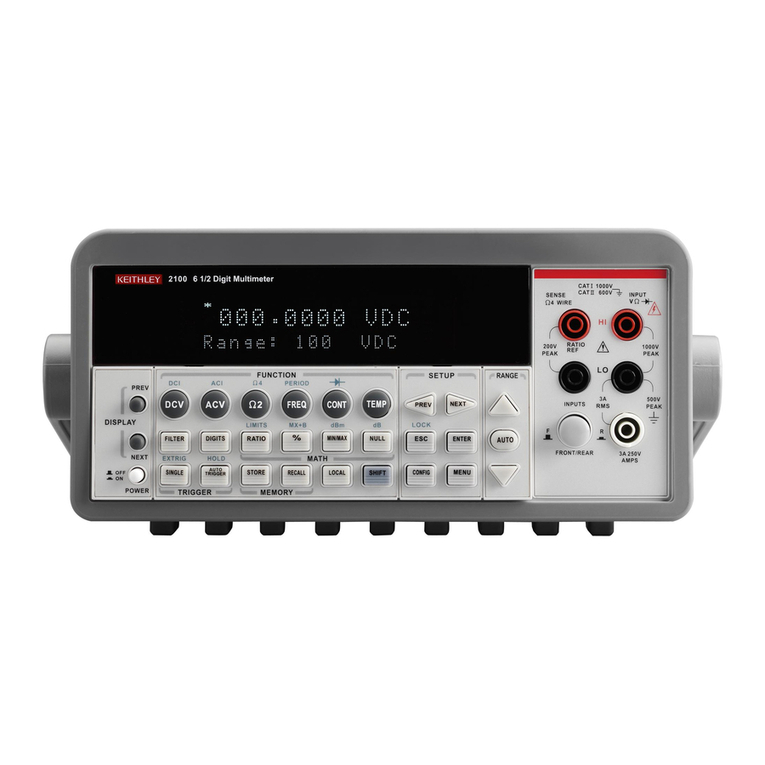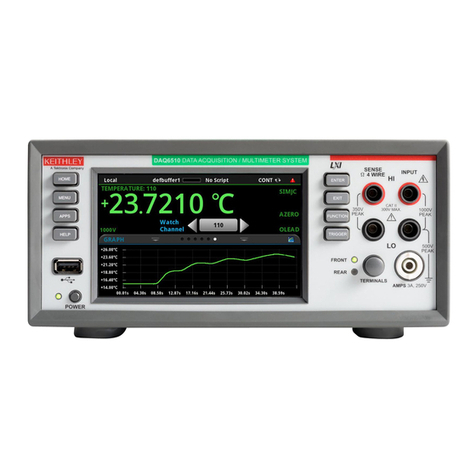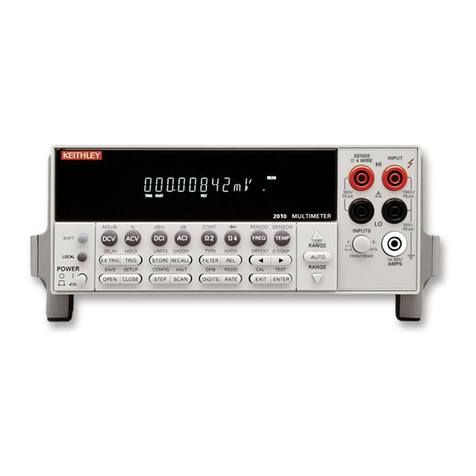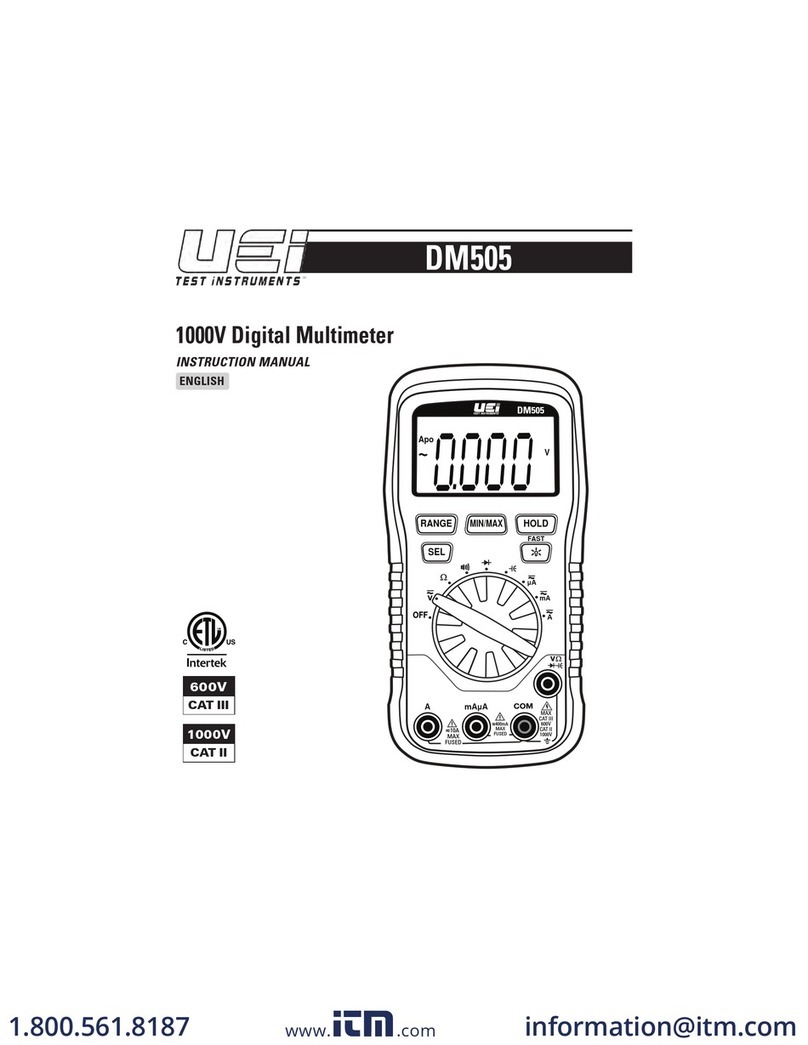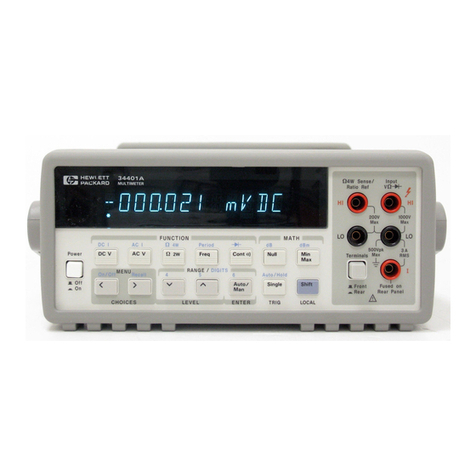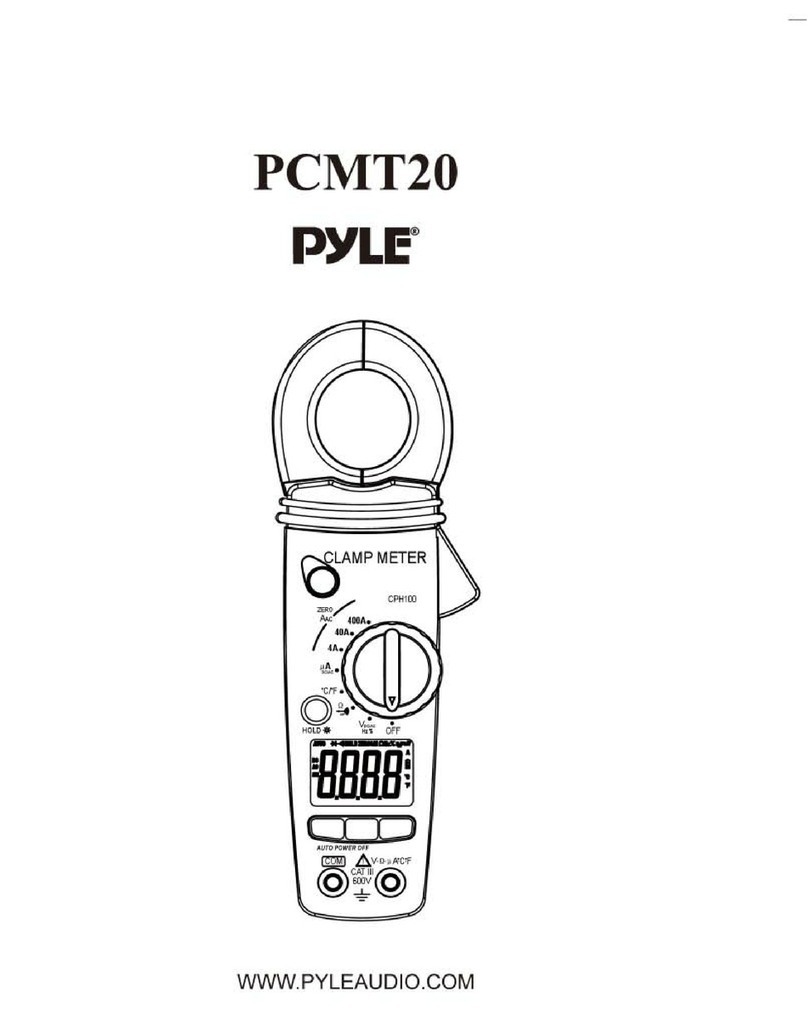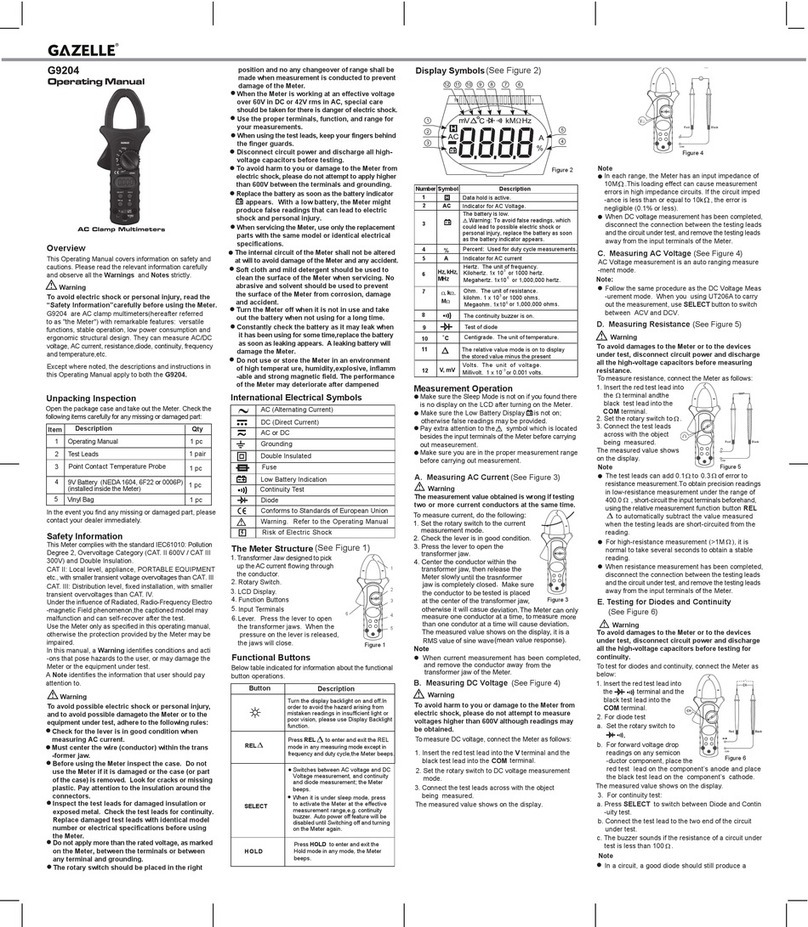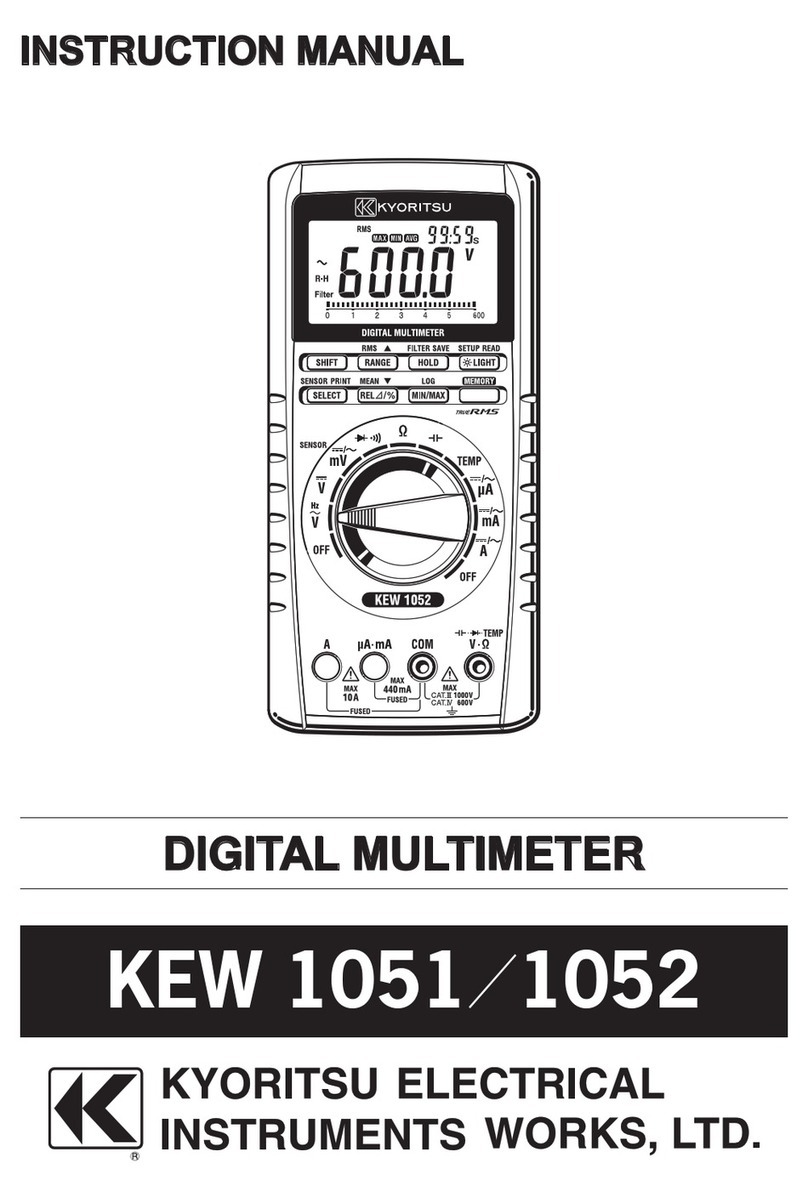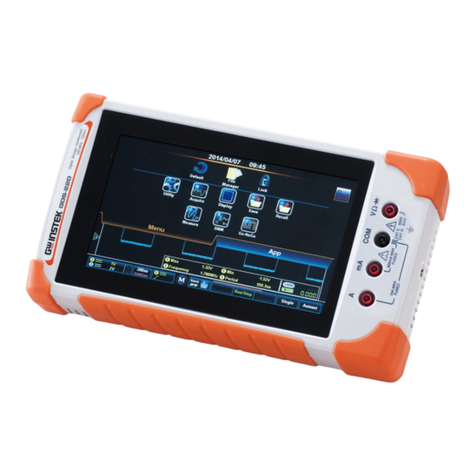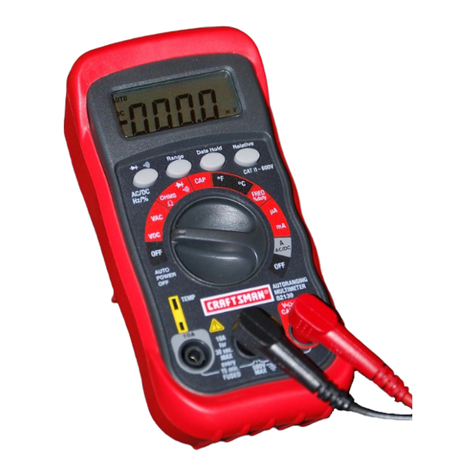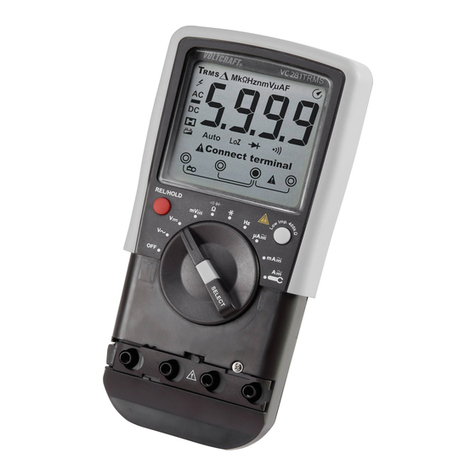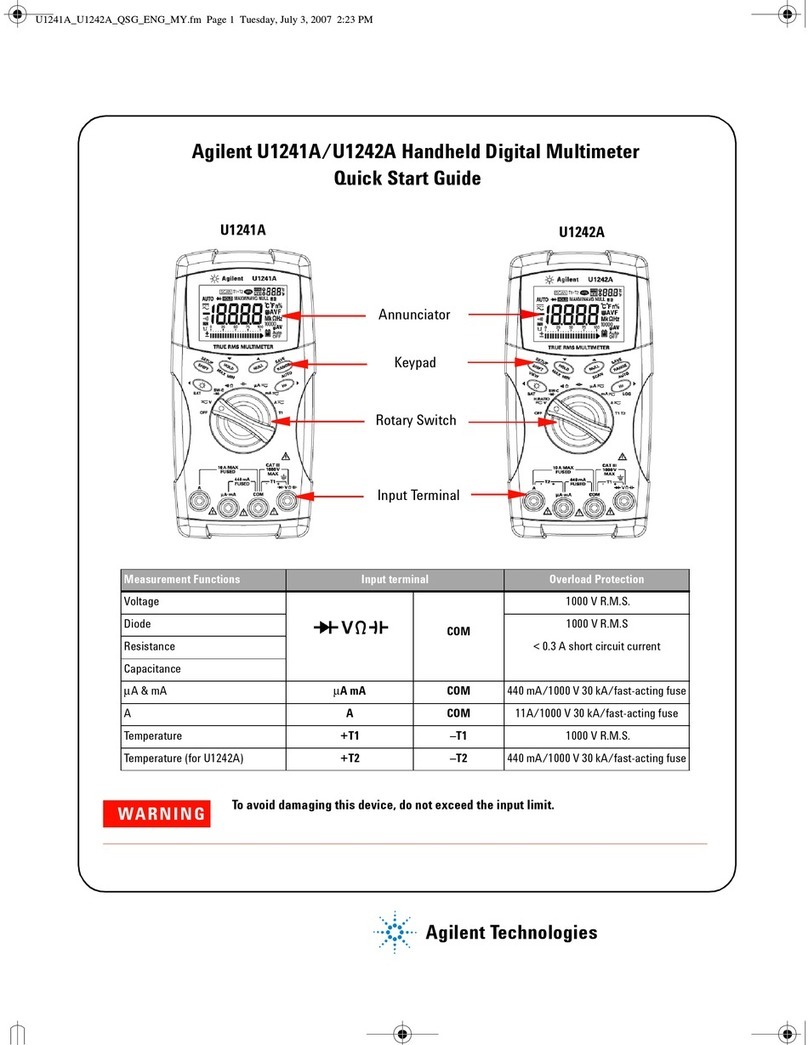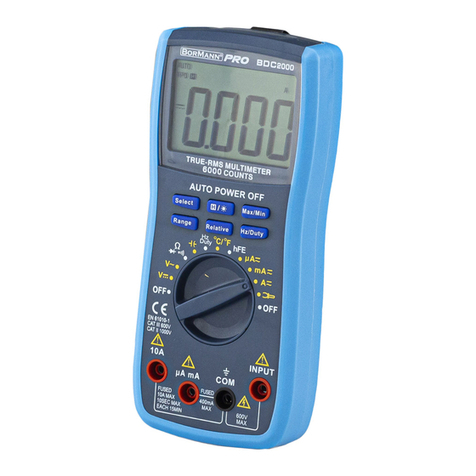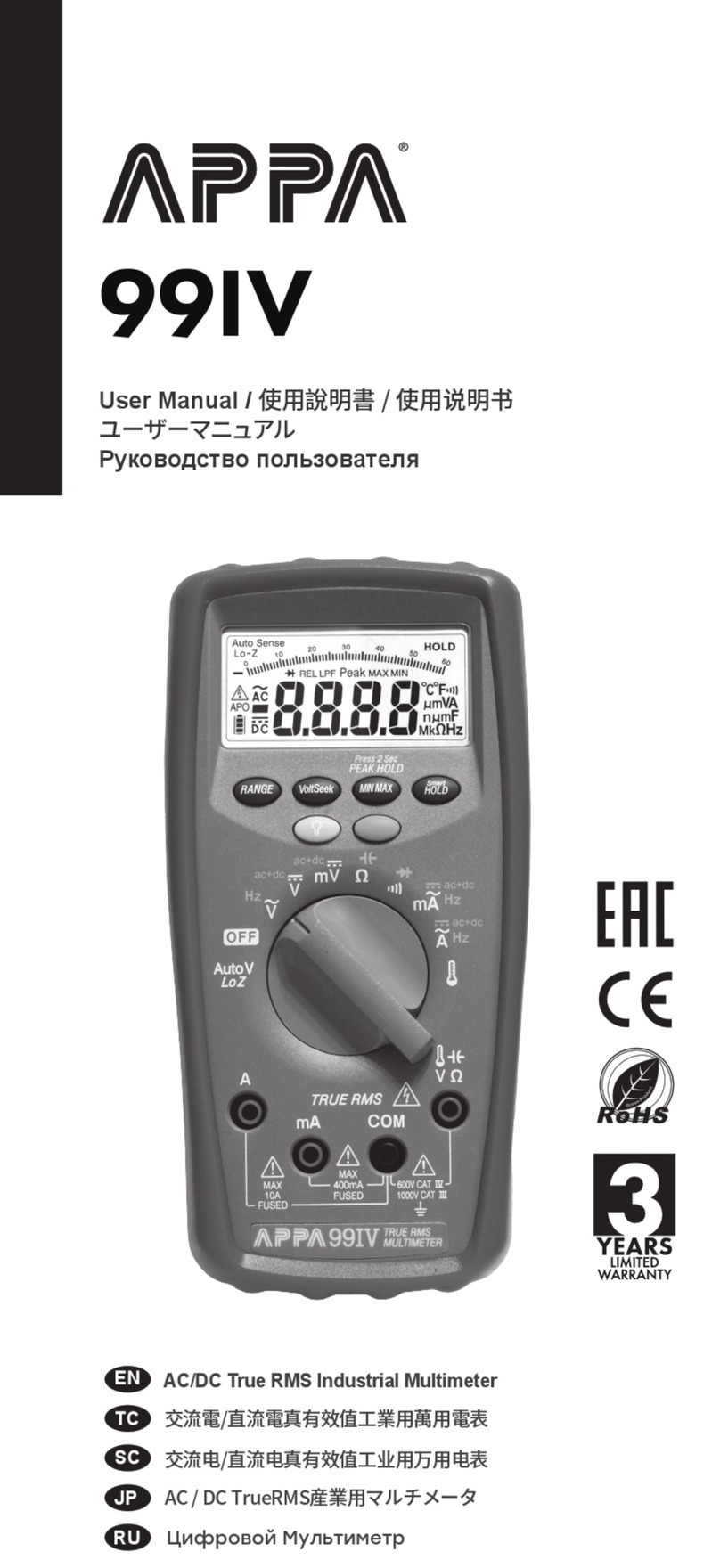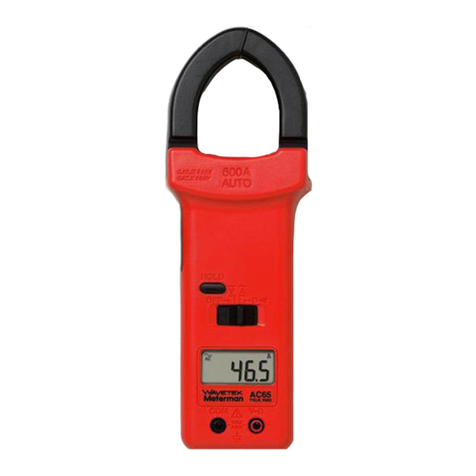2. With the power switch off, the battery charge circuitry is
automatically energized to charge the battery et the maxi-
mum rate. When the battev pack is first installed, or if it
has completely discharged, allow it to charge for at least 14
hours in this condition.
NOTE
For maximum battery life, do not allow the bat-
tery pack to remain completely discharged. Con-
stant charging will not harm either the battery
pack or the instrument. The Model 177 may be
operated up to six hours from fully charged bat-
teries. However, since 10 charge/discharge
cycles may be required to reach full batten/
capacity, less than six hours DMM operation can
be expected when the battery pack is first in-
stalled.
3. When the Model 177 DMM is in use on line power, the bat-
tery charger maintains a trickle charge on the battery pack.
2.7 OPERATING INSTRUCTIONS
The basic operating instructions for the Model 177 DMM are
outlined in the following steps, and condensed operating in-
structions are provided on the bottom cover of the instru-
ment and contained in Table 2-l. These instructions should
only be used after becoming completely familiar with the
operation of the Model 177 through day-to-day use. Until this
familiarity has been achieved, best performance and safest
operation will be obtained by using the individual instructions
provided in this section. Refer to Figure 2-3 and operate the
DMM es follows:
1. Turn on the power by depressing the ON/OFF pushbutton
and allow a 10 minute warm-up time. Allow additional
warm-up for zero stability on lowest DMM and Q ranges.
2. Select the function with the AC/DC, R, V, or A push-
buttons.
3. Select the range by depressing the appropriate push-
button.
4. Connect the source to the INPUT terminals. Accessories
described in Section 1 should be used as required.
CAUTION
Do not exceed the maximum input ratings
shown below.
DCV
ACV
DCA. ACA
R
QOmV, ZOmV, ZVI: 450V rms continuous;
1200V peak momentan/, for up to eight
seconds per minute maximum.
(20.12OOV): 12OOV peak.
;I ;;;ges): 1OOOV rms; 1400V peak;
.
(All Ranges): ZA, 250V DC or rms (fuse pro-
tected).
(All Ranges): 350V peak.
2.9 ZERO ADJUSTMENT
The front panel zero adjustment provides compensation for
test lead resistance and thermal EMFs generated in the cir-
cuits connected to the DMM input terminals. The zero adjusr-
ment is operative on the 20mV and 200mV ranges of DCV.
20 and 200R ranges and all DCA ranges. In general, the zero
must be readjusted whenever the function is changed and the
measurement is to be made on a range where the zero adjusts
ment is operative. The accuracy specifications assume that
zero is adjusted on the lowest range of the function. Where
applicable, a specific zero adjustment instruction is provided
in the description of how to make the particular function
measurement.
2.9 DC VOLTAGE MEASUREMENT
The Model 177 measures DC voltages from l,lV/digit to
12OOV. The maximum displayed reading is 19999. Overrange
is indicated by a flashing 0000 except on the 12COV range. On
the 1200V range, the display can read beyond the maximum
allowable input voltage. Use the Model 177 to measure DC
volts as follows:
CAUTION
Do not exceed the maximum input voltage
ratings, or instrument damage may occur.
1. Turn on power with ON/OFF pushbunon and select DC
with the AC/DC pushbutton.
2. Select the desired range from the six ranges available. The
decimal point is positioned by the range pushbuttons. The
1200V DC range is selected by the 1000 pushbutton.
NOTE
The 20M pushbutton is inoperative for DC volts.
If this pushbutton is inadvertantly depressed. the
Model 177 will read zero regardless of the
voltage applied and the eight second per minute
overload rating will apply.
3. Connect the signal to be measured between the INPUT HI
and LO binding posts. The binding posts accept wires,
spade lugs or banana plugs for ease of connecting the cir-
cuit to be measured. Low thermal cabling and connections
are recommended for measurements on the 20mV and
200mV ranges.
4. For the top four ranges. merely observe the displayed
digits, polarity sign and decimal point locations. The top
four ranges are direct-reading in volts. Nominal settling
time is located to within one digit of final reading.
5. For the 20mV and 200mV ranges, the front panel ZERO
must be adjusted to obtain rated accuracy. This adjust-
ment is necessary to compensate for thermal EMFs
generated by the connections to the circuit to be
measured. These voltages may be only a few microvolts or
several tens of microvolts. The zero adjustment span is set
up at the factory to allow at least f75,tV adjustment. To
adjust zero, proceed as follows:
2-3




















